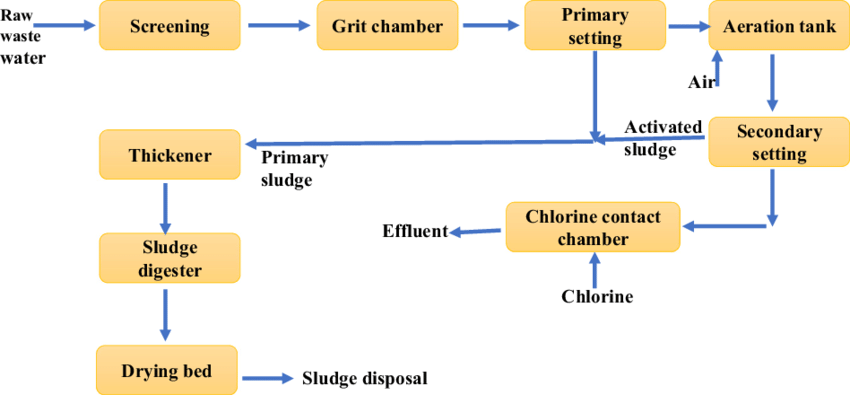How Reclaim Waste can Save You Time, Stress, and Money.
Table of ContentsThe smart Trick of Reclaim Waste That Nobody is DiscussingWhat Does Reclaim Waste Mean?The 6-Minute Rule for Reclaim WasteReclaim Waste Fundamentals ExplainedThe Only Guide to Reclaim Waste
Explore the types, occurrences, and kinds of fluid waste. Residential sewer waste describes the waste and items from a property sewage-disposal tank. This type of waste is developed by people in houses, schools, and various other structures. This only consists of septic systems that have a drain field. The proper monitoring and disposal of residential sewer waste call for fluid waste to be moved to a sewage therapy plant where the proper methods and devices are related to purify and dispose of waste.
Business waste often includes potential threats, such as flammable materials or a mix of liquid and solid waste products, and requires a much more advanced and detailed disposal process. The disposal of industrial waste typically includes the filtration of waste prior to transportation to ensure risk-free and correct disposal. Industrial waste is produced from byproducts and runoff of industrial processes and manufacturing.
This type of waste can not utilize the very same sewer management transportation or procedures as septic or business fluids. The hazardous waste management procedure calls for the assessment and testing of fluid waste prior to it goes through the disposal procedure (industrial wastewater treatment). Drainage waste is the fluid waste that originates from runoff and excess stormwater in extremely populated locations or cities
Runoff waste can trigger contamination and flooding if not handled effectively. Ensuring appropriate waste monitoring can prevent catastrophes and decrease environmental injury.
The Buzz on Reclaim Waste
Call PROS Services today to learn more about our waste monitoring and disposal services and the proper ways to look after the liquid waste you produce.
This so-called 'wastewater' is not only an important resource however, after treatment, will certainly be released to our land, rivers or the ocean. Used water from bathrooms, showers, baths, kitchen area sinks, laundries and commercial processes is understood as wastewater.

water utilized to cool down equipment or clean plant and devices). Stormwater, a kind of wastewater, is runoff that moves from agricultural and metropolitan areas such as roofs, parks, yards, roads, courses and rain gutters right into stormwater drains pipes, after rainfall. Stormwater moves untreated directly to regional creeks or rivers, ultimately reaching the ocean.
Reclaim Waste Can Be Fun For Anyone
In Queensland, many wastewater is dealt with at sewage treatment plants. Wastewater is transferred from domestic or commercial sites via a system of sewers and pump terminals, known as sewage reticulation, to a sewage treatment plant.
The Division of Natural Resources advises city governments about managing, operating and keeping sewage systems and treatment plants. In unsewered locations, city governments might call for owners to set up individual or household sewer therapy systems to treat domestic wastewater from commodes, cooking areas, washrooms and washings. The Department of Natural Resources authorises using home systems when they are shown to be effective.
Most stormwater obtains no therapy. In some new subdivisions, therapy of some stormwater to eliminate litter, sand and crushed rock has actually begun making use of gross contaminant traps. Wastewater therapy happens check these guys out in four stages: Removes strong matter. Bigger solids, such as plastics and other objects mistakenly discharged to sewage systems, are eliminated when wastewater is travelled through displays.
Wastewater after that flows right into huge containers where solids clear up and are gotten rid of as sludge. Grease and scum are skimmed from the surface area. Makes use of tiny living organisms called micro-organisms to break down and eliminate staying dissolved wastes and great particles. Micro-organisms and wastes are incorporated in the sludge. Eliminates nitrogen and phosphorus nutrients that can cause algal blooms in our rivers and threaten aquatic life.
Reclaim Waste - An Overview
Nutrient removal is not offered at all sewage treatment plants because it needs costly specialist equipment. Clear liquid effluent created after treatment might still contain disease-causing micro-organisms - industrial wastewater treatment.

This generally means wastewater needs to be dealt with or pollutants removed prior to it can be discharged to rivers. A lot of wastewater streams into the sewage system. Under the Act, city governments provide approvals and permits for environmentally relevant tasks (ERAs) entailing wastewater launches that could have a neighborhood impact. The division provides approvals and permits to Periods including wastewater releases that could have a local or statewide effect.
The 2-Minute Rule for Reclaim Waste
Or else, samples are taken for lab evaluation. Commonly several tests are needed to develop the degrees of each of the various pollutants such as oils, heavy metals and chemicals in water. Surveillance provides factual info regarding water quality and can verify that permit problems are being satisfied. The details obtained through monitoring offers the basis for making water top quality choices.
Comments on “8 Simple Techniques For Reclaim Waste”